Every page load draws power in a data center somewhere—power for servers, switches, storage, and cooling. A decade ago, “green hosting” was little more than a marketing tagline. Today it’s an engineering choice with measurable impact, because the energy mix behind your workloads (and the efficiency of the data centers running them) directly affects emissions.
But “green” isn’t one thing. Providers typically pursue one or more of the following:
- Energy efficiency: low PUE (Power Usage Effectiveness), efficient cooling, and high server utilization.
- Renewable energy use: running facilities on renewable electricity, either directly or by matching consumption with renewable energy purchases (e.g., Renewable Energy Certificates/Guarantees of Origin).
- Offsets and removals: financing projects that reduce or remove emissions elsewhere to compensate for residual emissions.
- Next-gen grid alignment: not just buying enough renewable power annually, but moving toward 24/7 carbon-free energy so that each hour of consumption is matched by local carbon-free generation. Google has made this a moonshot goal for 2030, and it shapes many “green” claims you’ll see downstream from hosts that sit on Google Cloud.
Understanding those levers helps you separate genuine impact from vague marketing. Below, you’ll find a curated list of providers with documented initiatives, plus the context needed to choose responsibly.
How to Evaluate Green Claims (Fast but Rigorous)
Before the provider list, here’s a quick “trust but verify” checklist you can actually use:
- What exactly is “green” here?
Are they buying Renewable Energy Certificates (RECs), investing in energy efficiency, running on a cloud that matches electricity with renewables, or pushing toward hourly 24/7 carbon-free energy? HostPapa, for instance, openly states it uses RECs to support wind/solar. That’s legitimate, but different from operating directly on carbon-free power every hour. - Is there a public sustainability page or report?
Companies like IONOS publish an environmental page and sustainability report confirming 100% renewable electricity at proprietary data centers and efficiency targets (PUE). That’s the kind of documentation you want. - Who’s the upstream?
Many managed WordPress hosts run on Google Cloud, AWS, or Azure. Their climate targets matter because your workloads inherit the upstream grid mix and efficiency. (Google: 24/7 CFE by 2030; AWS: matching 100% of electricity with renewables by 2025; Microsoft: 100% renewable energy by 2025 and carbon-negative by 2030.) - Are the claims current?
2024–2025 brought major shifts. For example, Google reiterated its long-term 24/7 CFE ambition even as data-center electricity demand soared; the nuance here is important if you want hourly-clean workloads rather than annual matching.
Use those four checks as you scan the list below.
The 2025 Green Web Hosting Providers List (Curated)
Quick note on inclusion criteria: the providers below (a) publish specific sustainability commitments or are recognized for green credentials, and/or (b) run primarily on hyperscalers with documented renewable/efficiency goals. Where relevant, I’ve highlighted exactly how each provider achieves “green”—RECs, renewable matching, offsets, or 24/7 CFE alignment.
1) GreenGeeks — “300% Green” positioning (RECs + tree planting)
GreenGeeks is one of the most visible “green hosting” brands, recognized by the U.S. EPA’s Green Power Partnership. The company markets “300% green hosting,” meaning it matches its electricity use with three times the amount in renewable energy certificates, and it plants a tree per new account through One Tree Planted. If you want a budget-friendly cPanel host that leans heavily into RECs and public environmental messaging, GreenGeeks is the archetype.
Best for: small to mid-sized sites that want a conventional shared/VPS experience with strong REC-based claims.
2) DreamHost — Carbon-neutral stance and EPA Green Power Partnership
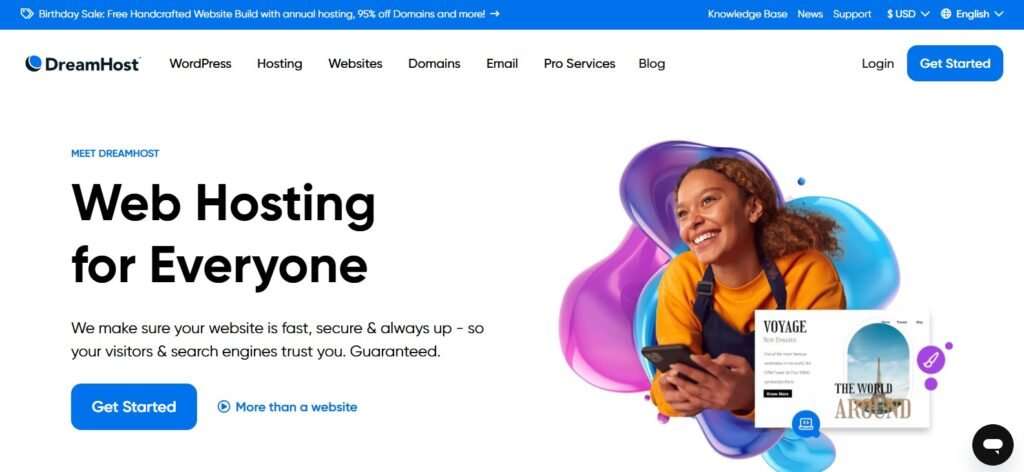
DreamHost maintains a long-standing sustainability page describing carbon-neutral operations and participation in the EPA’s program. The company promotes remote-first policies, efficiency, and renewable-power purchasing to offset its footprint. If you prioritize a mainstream U.S. brand with transparent green positioning and open-source ethos, DreamHost is a safe pick.
Best for: WordPress sites and developers who want a familiar control panel plus published sustainability commitments.
3) A2 Hosting — Carbonfund.org partner since 2007 (offsets)
A2 Hosting emphasizes a lengthy partnership with Carbonfund.org, focusing on carbon offsets and efficiency practices. While offsets are a different lever than 24/7 renewable procurement, the longevity and clarity of the partnership are differentiators in the shared/VPS market.
Best for: cost-conscious users who still want a provider with a documented offset program and strong performance features (LiteSpeed/NVMe).
4) HostPapa — REC-driven approach to power use
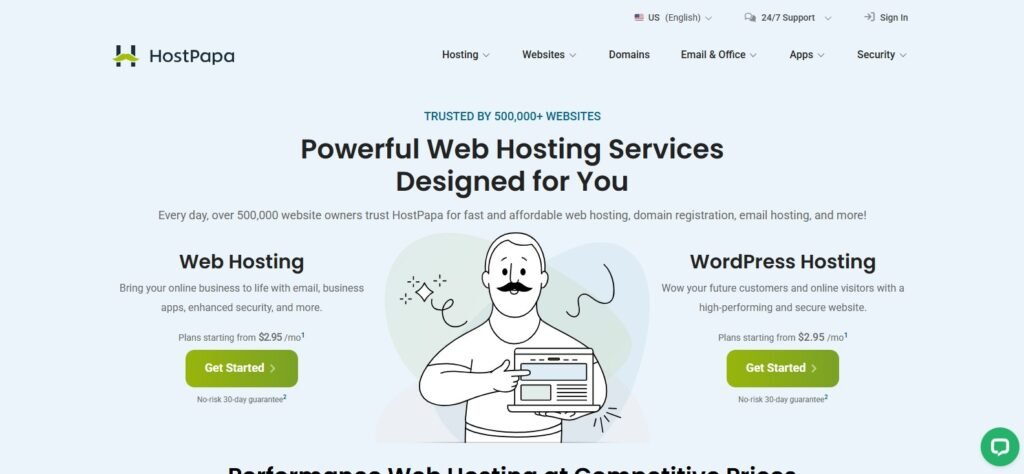
HostPapa has been explicit about buying RECs to support wind/solar for years, and it publishes accessible explainers on what RECs and VERs (offsets) are. If you like clarity about the mechanism—“we buy renewables to match our consumption”—this documentation is refreshing.
Best for: SMB sites that want a budget plan and straightforward renewable matching via energy certificates.
5) IONOS — 100% renewable power at proprietary data centers (Europe & North America)
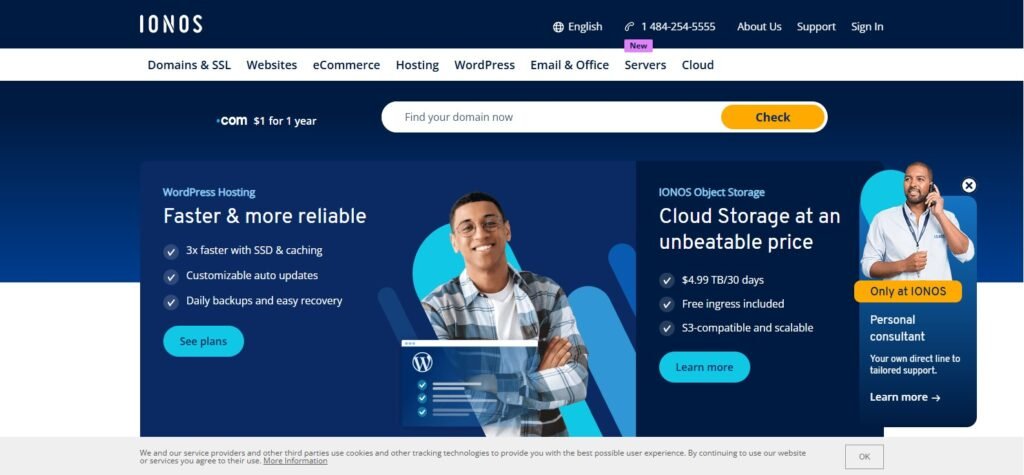
IONOS operates its own data centers and publicly states they run on 100% renewable electricity in Europe and North America. The group also publishes an annual sustainability report and, in 2025, announced a new German data-center location powered by 100% renewables with a PUE claim around 1.23 in full operation—an efficiency signal worth noting.
Best for: users who want a European provider with owned facilities, published sustainability KPIs, and enterprise-grade platforms.
6) SiteGround — Google Cloud under the hood (renewable matching + efficiency)

SiteGround’s modern platform runs on Google Cloud, inheriting Google’s annual renewable matching and long-term 24/7 CFE target. For teams that don’t want to build directly on a hyperscaler but want to benefit from its network efficiency and renewable programs, SiteGround is a familiar managed-WordPress experience built on greener infrastructure. (Independent roundups regularly cite SiteGround’s “Google-powered” angle among green options.)
Best for: managed WordPress users who value Google Cloud’s backbone and a polished control panel.
7) Kinsta — Managed WordPress at Google Cloud’s premium tier

Kinsta’s entire stack is on Google Cloud’s Premium Tier, so you benefit from Google’s renewable procurement and efficiency efforts as well as edge caching. If your priority is performance and uptime—while aligning with a hyperscaler driving toward 24/7 CFE—Kinsta is a premium, developer-friendly route.
Best for: sites that want the operational polish of a top managed WordPress host coupled with Google’s sustainability program.
8) WP Engine — Multi-environment WordPress with global CDN, built on major clouds
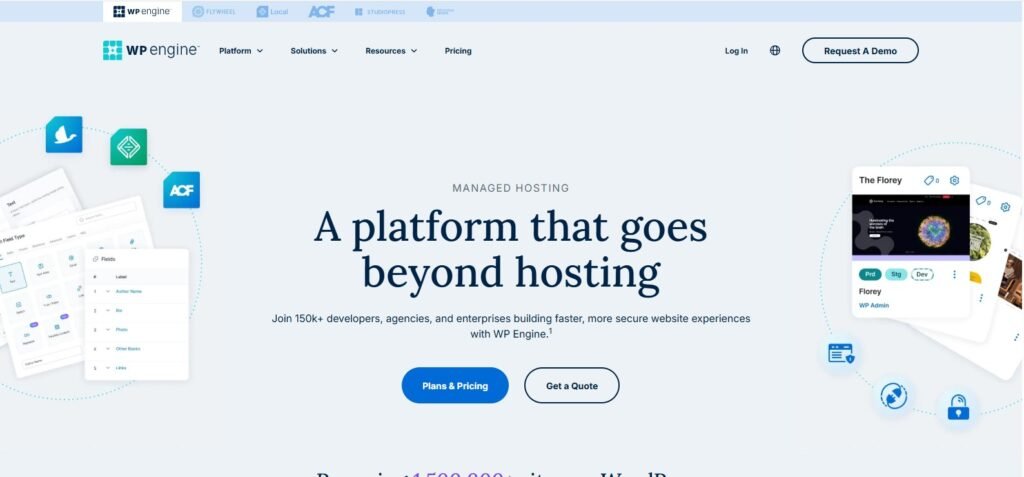
WP Engine doesn’t market “green” as aggressively as some shared hosts, but in practice many WP Engine environments run on hyperscalers (including Google Cloud) whose roadmaps include renewable matching and, in Google’s case, 24/7 CFE by 2030. It’s a credible path when you need developer workflows, speed, and the upstream’s renewable program.
Best for: agencies and high-traffic WordPress sites that need enterprise-grade tooling while inheriting greener upstream power.
9) Cloudways — Choose your greener upstream (DO/Vultr/AWS/GCP)
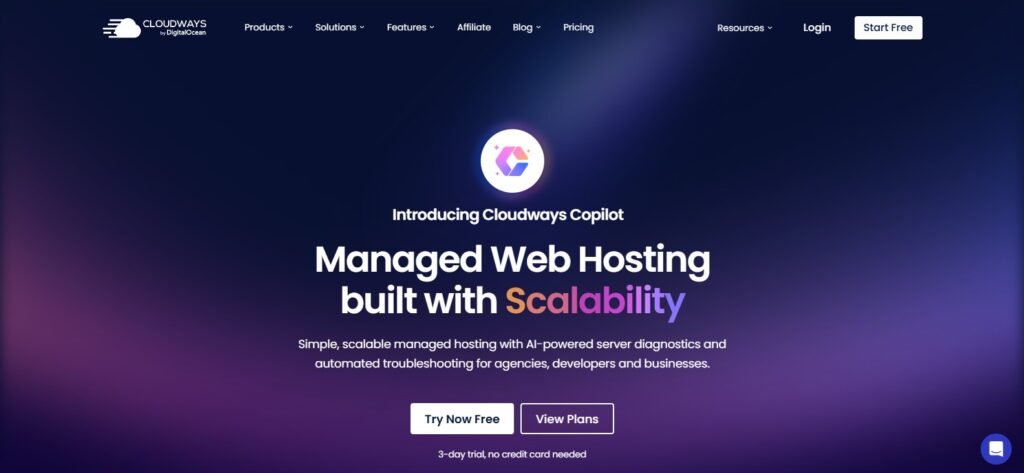
Cloudways lets you deploy on DigitalOcean, Vultr, AWS, or Google Cloud but adds managed optimization (Varnish/Redis/Backups). If you want a “green-aware” build, pick Google Cloud regions with stronger carbon-free energy shares or AWS regions with robust renewable projects; both hyperscalers publish sustainability milestones. AWS reports matching 100% of its electricity consumption with renewable energy as of 2024, and targets remain in force for 2025.
Best for: Dev teams who want control to choose underlying regions/providers aligned to renewable targets.
10) Cloudflare (CDN/Edge) — Make your whole stack greener and faster
Cloudflare isn’t your origin host, but placing a CDN/edge layer in front of your site slashes origin energy use by caching content globally. Cloudflare has long claimed 100% renewable energy for purchased electricity and set a goal to remove historical emissions from powering its network by 2025. For many sites, putting Cloudflare in front of any host yields immediate speed and carbon intensity gains.
Best for: anyone who wants a low-effort, high-impact way to reduce bandwidth at the origin and improve carbon-per-request.
The Hyperscaler Angle: Google Cloud vs. AWS vs. Azure (2025 Snapshot)
If your host sits on one of the big three, your emissions profile depends heavily on that upstream’s grid strategy and data-center efficiency.
- Google Cloud has matched its annual electricity use with renewable purchases for years and is now pushing to run on 24/7 carbon-free energy by 2030 in every grid where it operates. That’s the gold standard target because it tackles the “hourly” problem—clean power when you actually consume it.
- AWS says it is matching 100% of the electricity used by its operations with renewable energy and reached that match in 2024; it continues to expand projects globally. If you deploy on AWS through a managed host, you inherit those renewable purchases and AWS’s efficiency work.
- Microsoft/Azure targets 100% renewable energy by 2025 and carbon-negative by 2030. If your managed platform runs Azure-based infrastructure, you benefit from these commitments and the company’s public sustainability reporting.
There’s an honest caveat: AI’s growth is dramatically increasing electricity demand in data centers. Even leaders like Google acknowledge the challenge of keeping emissions down while compute explodes; keep that context in mind when you read any “green” claim in 2025.
RECs vs. 24/7 Carbon-Free Energy: What Should You Prefer?
Renewable Energy Certificates (RECs) are legitimate instruments that financially support renewable generation; many budget hosts use RECs to “green” their consumption. That’s better than nothing, and it’s audit-friendly. However, annual REC matching can mask hourly mismatches: your server might be running at 2 a.m. on a coal-heavy grid while the renewable purchase sits on a different grid at a different hour.
By contrast, 24/7 CFE attempts to align every hour of your consumption with local, carbon-free generation. It’s technically harder but environmentally stronger. If you have the option—via Google Cloud-based hosts or region selection—prefer workloads in regions with higher hourly carbon-free percentages and credible roadmaps toward 24/7 CFE.
Bottom line: REC-based hosts (GreenGeeks, HostPapa, A2 via offsets) are valid and often cost-effective; hyperscaler-based platforms (SiteGround, Kinsta, WP Engine) ride larger-scale renewable programs and, in Google’s case, the 24/7 CFE trajectory. Choose based on your budget, performance needs, and the level of climate rigor you want.
Building a Greener Stack in Practice (Without Slowing Down)
Pick a cleaner region. If your host lets you choose regions, pick ones with greener grids and published carbon-free energy shares (see Google’s per-region guidance).
Add a green CDN. Even if your origin host isn’t perfect, caching at the edge (Cloudflare) reduces origin CPU time and data transfer—materially lowering energy per request.
Right-size your resources. Over-provisioning idles compute; under-provisioning increases retries and waste. Monitor CPU/RAM and scale to the sweet spot.
Use NVMe storage and modern PHP/HTTP. Faster I/O and efficient runtimes shorten request times, which usually means less energy per transaction.
Separate static media. Offload images/video to object storage with a CDN to avoid wasteful origin workloads.
Measure, don’t guess. Track performance (TTFB, LCP) and availability. The quickest path to lower emissions is often simply fewer, faster requests.
Choosing Between Providers: Three Common Scenarios
Solo creator or small business on a tight budget
You’ll likely get the best balance from GreenGeeks or HostPapa—both rely on REC-based greening and keep pricing friendly. If you prefer an offset-forward brand with long history, A2 Hosting fits.
Growing WordPress or WooCommerce site that needs more speed
Consider SiteGround, Kinsta, or WP Engine—you’ll inherit the efficiency and renewable programs of Google Cloud (and in AWS-backed cases, Amazon’s 2025 renewable match). Align regions with cleaner grids where possible.
Enterprise or data-sovereignty needs in Europe
IONOS stands out with owned data centers, 100% renewable electricity claims, and public reporting—handy if you need documentation for ESG. Augment with Cloudflare to trim origin load further.
A Note on 2025 Reality: Ambition Meets AI-Era Electricity
2025 has underscored a paradox: the same AI boom that can optimize grids and sustainability is also driving huge demand for compute. Google’s own reporting highlighted rising data-center energy and the difficulty of keeping emissions down during rapid AI growth. That doesn’t invalidate green-hosting efforts, but it urges realistic expectations and smarter choices (regions, caching, efficient code) rather than slogans.
Quick Profiles (At a Glance)
- GreenGeeks — REC-heavy “300% green” + tree planting; EPA Green Power Partner. Great value for conventional shared/VPS.
- DreamHost — Carbon-neutral positioning and EPA partnership; clear sustainability page.
- A2 Hosting — Longtime Carbonfund.org partnership; offset-centric, performance-oriented stack.
- HostPapa — Transparent REC strategy and green explainers. IONOS — 100% renewable electricity at owned data centers; 2024/2025 sustainability reporting and new PUE-efficient builds.
- SiteGround — Runs on Google Cloud; inherits renewable matching and 24/7 CFE trajectory.Kinsta — Premium Google Cloud footprint; performance + renewable program alignment.
- WP Engine — Enterprise WordPress; benefits from hyperscaler roadmaps (Google/AWS) depending on region/stack.
- Cloudways — Lets you choose AWS/GCP etc.; align regions with higher renewable shares; AWS indicates renewable matching of operations.
- Cloudflare (CDN) — 100% renewable electricity matched; goal to remove historical network emissions by 2025; practical way to cut origin energy.
FAQ: Green Hosting in 2025
Is REC-based hosting “real” greening?
Yes—RECs finance renewable generation and, under accepted accounting rules, let companies match electricity use with renewables. It’s different from hour-by-hour carbon-free operation, but still a valid mechanism. HostPapa explains the distinction plainly.
What’s the simplest way to reduce my site’s footprint today?
Put a CDN like Cloudflare in front of your site to cache content globally, then choose an origin region with a cleaner grid. You’ll reduce origin compute and data transfer, often boosting performance at the same time.
If my host runs on Google Cloud, does that automatically make it “green”?
You inherit Google’s renewable matching and its push toward 24/7 CFE, which is better than the industry baseline. Still, pick regions with higher carbon-free scores when latency allows.
What about AWS and Azure?
AWS reports matching 100% of electricity consumption with renewable energy as of 2024 and maintains a 2025 commitment; Microsoft is targeting 100% renewable energy by 2025 and carbon-negative by 2030. If your managed host sits on either, you benefit from those programs.
Are “green” hosts slower or more expensive?
No. Many of the fastest hosts ride hyperscalers that are also sustainability leaders. In practice, faster sites often use less energy per request.
Final Recommendations
If you want the most budget-friendly green posture with transparent claims, start with GreenGeeks or HostPapa and add Cloudflare for edge efficiency. If you prioritize performance with cleaner upstream energy, choose Kinsta or SiteGround (Google Cloud)—and be intentional about region selection. For European operations or ESG reporting needs, IONOS offers owned facilities with renewable electricity and a clear paper trail.
Whichever path you pick, remember the three levers you control right now: efficient code, smart caching/CDN, and region choice. Stack those with a provider that documents its energy strategy, and you’ll have a website that’s both fast and future-proof—for the planet and your business.



